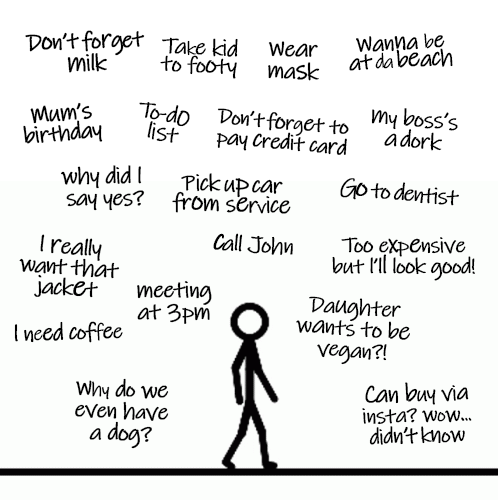Hardly a day goes by in the life of a marketer or loyalty program operator without discussing the customer journey. Ah… the customer journey —don’t you love the poetry in the word journey? It suggests an elegant passage from one stage to another, much like the ‘journey through motherhood’ or ‘the journey through life’.
As if life’s chaos follows a clear smooth roadmap. Although you might think that the oh-so-glamorous customer journey is a graceful one. Surprise, it’s not!
Marketers always begin by acknowledging that the ‘customer needs something’. This need drives them to explore multiple brands, select a label and purchase. They use what they bought, believe it’s tremendous, and go tell the world. Rinse and repeat.

When marketers visualise patterns like this, they often think they have a winning strategy. ‘Quick, let’s map all stages and put together a series of emails, SMSes, push notifications, keywords, landing pages and so on’.
To you, that marketer. Stop!
You’re bound to design a marketing arsenal that will bombard customers with useless emails and will make them run away.
Of course mapping out how customers interact with a brand and its offerings is important. A visual storyline provides valuable insights and enables marketers to improve communication with customers and their experiences. Ultimately making well-informed marketing decisions.
No doubt about it.
However, (spoiler alert) customers just go about their lives, happily minding their own business and managing their own worries. Not yours. They seldom think of any brands, let alone yours.
Consider this, 21.3% email open rate with a mere 2.62% CTR is the average across industries. When customers face a chain of emails, those numbers dilute exponentially.
Unfortunately customer journey mapping simplifies the process into a linear pragmatic series of stages. It ostensibly assumes all customers follow the same path. Ignoring human complexities, individual motivations, loyalty psychology and natural deviations.
Thinking of a seamless, predictable journey from brand awareness to unwavering loyalty may be an aspiration more than a reality.
Despite my disagreements with the approach of current day marketers, this article is not an argument against the merits of a customer journey. The approach is structured. In fact, customer journeys have become an efficient framework for perceiving the world from the customers’ perspective and improve customer experience.
However, it should be taken with a grain of salt.
My incredulity is intended to be thought provoking. An invitation to contemplate the genuine complexities and challenges inherent in managing those customer experiences for better communications and customer engagement strategies.
In other words, ask yourself: is there value in what I put in front of customers and help them make decisions? Or am I writing emails to fill in the supposed journey I need to drive?
Allow me to show you a more accurate reflection of the customer journey:

Consider the following points when using the customer journey framework to guide your engagement strategy.
Oversimplification: A customer journey often breaks down customer interactions into a linear series of stages, but in reality, customer behaviour is more complex and nonlinear. Customers might jump between stages, revisit certain stages, or skip stages altogether.
Nearly 70% of consumers say behaving inconsistently is very human and totally acceptable.
Lack of Context: Customer journeys tend to focus on the online touchpoints and neglect the broader context of the customer’s life. Customers make decisions based on a variety of factors beyond the specific touchpoints, such as cultural influences, personal experiences, and social networks.
Homogeneity: A customer journey assumes that all customers within a segment follow a similar path. This can lead to a one-size-fits-all communications strategy that fails to account for individual differences in preferences, behaviours, and motivations.
Static Nature: The traditional approach treats the customer journey as a fixed model, but the digital landscape changes fast. Customer behaviours and preferences evolve quickly, making it necessary for marketers to continuously adapt their strategies.
Focus on Transactions: The conventional approach often emphasises the stages leading up to a purchase, neglecting the post-purchase stages, which are equally important. Building long-term relationships and retention is as crucial as acquiring new ones.
Limited Data Integration: Many customer journey models rely on aggregated data from different touchpoints, which can result in a fragmented view of the customer. This can lead to irrelevant, lack of personalisation and tailored experiences. Aggregated data is a key challenge for many organisations.
Between 60% and 73% of all data within an enterprise goes unused for analytics.
Insights are your friend: An insight is a piece of knowledge that helps in understanding something previously unknown about consumers. Finding and insight is like finding that hidden thing about the consumer that will trigger an emotion and set them into action. Use insights!
For example, a loyalty manager of a gym aiming to attract new members highlights the widely known benefits of exercise for health and productivity. Despite this, 80% of adults don’t exercise. Among those who wish to exercise, 56% cite time constraints due to work, family, and commitments. In this situation an insight to drive acquisition communications would be: people who want to exercise feel life gets in the way, yet exercise itself unlocks time to enjoy life. Use insights to guide your communications, not the journey.
I feel I raised my case and hope I’ve sparked your curiosity about looking at customer journeys from a fresh perspective. I like to think that when we dare to question our usual approaches, our communications and engagement strategies become more effective. Oh, and will annoy our audiences less.

